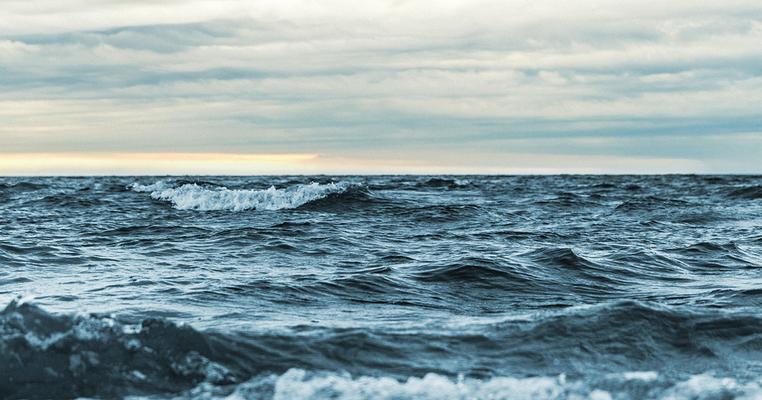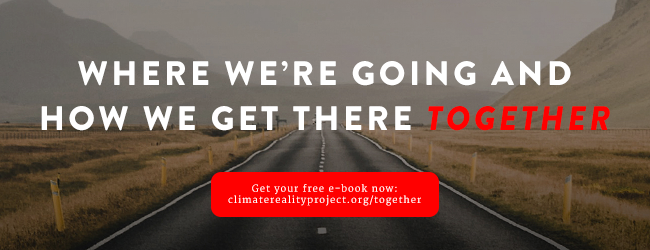
Not Just Sea Level Rise: How the Climate Crisis is Changing Our Oceans
Carbon pollution from burning fossil fuels like coal, oil, and natural gas is warming our planet and driving climate change. It’s throwing natural systems out of balance – to often devastating effect.
In few places are these changes more evident than our oceans. But when you think of the climate crisis and the ocean, it’s likely one impact springs immediately to mind and towers above all others: sea-level rise.
And that’s fair: our oceans are absorbing more than 90 percent of the increased atmospheric heat associated with human-caused greenhouse gas emissions, and according to NASA’s satellites and buoy data, seas around the world have risen an average of nearly 3.9 inches (9.8 cm) since 1993.
With nearly 40 percent of the US population living in coastal areas as of 2014, and many of the world's most populous cities sitting on or near a coast, sea-level rise represents a truly existential threat. Indeed, researchers at Cornell University estimated that by the year 2100, 2 billion people – about one-fifth of the world’s population – could be forced to leave their homes due to rising ocean levels.
>> Learn more about the climate migration crisis and how you can help. <<
But sea-level rise is just one of many ways our oceans are changing because of rising global temperatures. And in many cases, the results are far more grievous right now than the destructive nuisance flooding that has become a bellwether of the far-more-serious inundation to come as our seas rise thanks to melting land ice and the thermal expansion of warming water.
Our oceans cover more than 70 percent of the surface of our planet. We rely on them. For food. For jobs. For recreation. And the nearly 30 percent of the Earth that is land relies on them too. To power the weather that makes life possible. To keep temperatures stable in northern latitudes. To provide a travel route for vital goods and services. And so much more.
That’s why it’s so important that we act urgently to cut the greenhouse gas emissions driving the climate crisis and transition to an economy powered by clean, renewable energy. Will you join us?
Warm Waters = Powerful Storms
Warm water is the lifeblood for tropical storm systems. How strong a storm gets and how fast it strengthens depends largely on how warm the waters are along its path.
And while there’s little evidence to suggest that climate change alone actually creates more hurricanes, there is abundant information indicating our changing climate is supercharging more and more of the ones that do form.
It’s vital here to also remember that a hurricane is more than just its winds – it’s a major rainfall event accompanied by dangerous storm surge. And both of those impacts increase right alongside climbing wind speeds because A) higher temperatures evaporate more water from the surface of our oceans and B) warmer air holds more moisture.
The result: More water falling from above and more coming in from the ocean, hitting the coast harder and harder from both directions. And with rapidly strengthening tropical storm systems becoming more and more common in recent years, people can be under-prepared for the true intensity of the actual hurricane that makes landfall, potentially resulting in greater damage and even loss of life.
Acidification
Our oceans are an incredible carbon sink — they absorb at least 25 percent of the carbon dioxide humans produce every year (some studies suggest it’s even more than that). But this is changing sea surface chemistry dramatically: when carbon dioxide is absorbed by the ocean, it dissolves to form carbonic acid. The result, not surprisingly, is that the ocean becomes more acidic, upsetting the delicate pH balance that millions and millions of organisms rely on.
Since the Industrial Revolution, our seas have become about 30 percent more acidic, a rate not observed in 300 million years. This has a wide range of consequences for marine ecosystems, as well as for the billions of people who depend on the ocean for food and survival.
One ocean ecosystem, in particular, has gotten the lion’s share of news coverage related to ocean acidification: coral reefs.
Coral Bleaching
Climate change is one of the greatest threats to the future of coral reefs around the world for a few reasons – and you just got a taste of both.
So as our oceans become warmer and more acidic, coral reefs are suffering.
Coral reefs depend on the colorful algae that live throughout their nooks and crannies to survive. But when it becomes stressed by warmer and more acidic waters, coral expels this algae and turns white – a phenomenon known as “coral bleaching.” Bleaching weakens the coral and it may begin to starve.
Corals, which are rigid animals that shelter rich ecosystems, can recover from bleaching events. But persistent high temperatures and other environmental stressors like acidification make it more likely they will starve and die.
Climate models project that most of the world's reefs – including the famed Great Barrier Reef – could experience annual bleaching by 2050 if we don’t take action to reduce greenhouse gas emissions globally.
And that’s very bad, because keeping coral reefs healthy and growing is vital. Reefs protect our coastlines from erosion and flooding, host vastly productive ecosystems, and support local coastal economies through tourism and fisheries.
Indeed, according to the National Oceanic and Atmospheric Administration’s Coral Reef Conservation Program (CRCP), coral reefs in the US and its territories provide $3.4 billion in ecosystem services, including protection from storm surges and destructive waves, employment, tourism, and fishing.
Fishing and Seafood
Changes in our oceans doesn’t just threaten marine ecosystems. They also put pressure on human food systems and affect the livelihood of people who depend on the ocean for their income.
Fish are an essential protein source for 3.2 billion people, particularly those living in developing countries in the tropics, where fish can make up as much as 50 to 90 percent of animal proteins in the diets of residents. But warming waters are changing where some species live, and as they swim toward cooler waters, they leave behind communities and economies that truly depend on them.
“The main risks for fisheries and aquaculture are reasonably well understood: A number of marine species, depending on their mobility and habitat connection, are responding to climate impacts by shifting their distributions poleward and to deeper waters,” according to a report from the Food and Agriculture Organization of the United Nations.
Beyond this, warming and acidification have impacts on marine animals themselves. Changes in ocean chemistry mean some shellfish won’t be able to develop shells properly, and that harmful algae blooms – already causing problems in the Gulf of Mexico and Pacific Ocean – will grow rapidly. Many are also worried that changes in our oceans will mean a decrease in phytoplankton, an impact that would have a truly dire trickle-down effect.
“When there’s less plankton at the base of the food web, there’s going to be less fish,” Lisa Levin, a professor at Scripps Institution of Oceanography, told Inside Climate News.
What You Can Do
When the world gets warmer, the results impact real people’s lives. It’s a truth that too often gets lost amid data points and science jargon, late-breaking news, and heated political handwringing. But we must not let it.
Warming oceans mean powerful storms. They mean dying coral and dwindling or shifting fish populations. They mean lost livelihoods and hungry bellies. They mean migration – and all that comes with it.
But it doesn’t have to be this way.
We don’t need to adapt to a dangerous new normal; we can address the root cause of the problem. Right now. And that means ending our reliance on fossil fuels.
Together, we can build a cleaner, greener, healthier future for communities around the world. Click here to learn how.
Climate Reality is always working on new, informative, and accessible content that lays out the science and stakes of the crisis, as well as the solutions available right now that can turn the tide. Download our latest e-book, Where We’re Going and How We Get There Together, to discover more about this unique moment of possibility for our movement and how we can achieve a better, more sustainable future for our planet.
Just fill out the form below for your free copy and get started.


